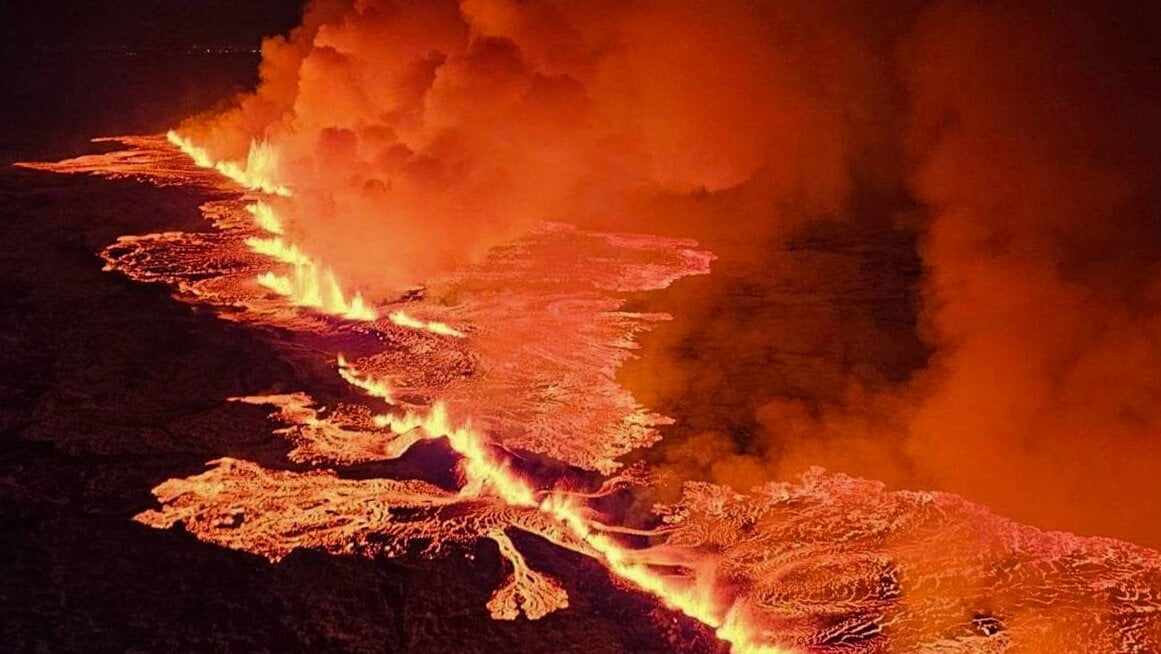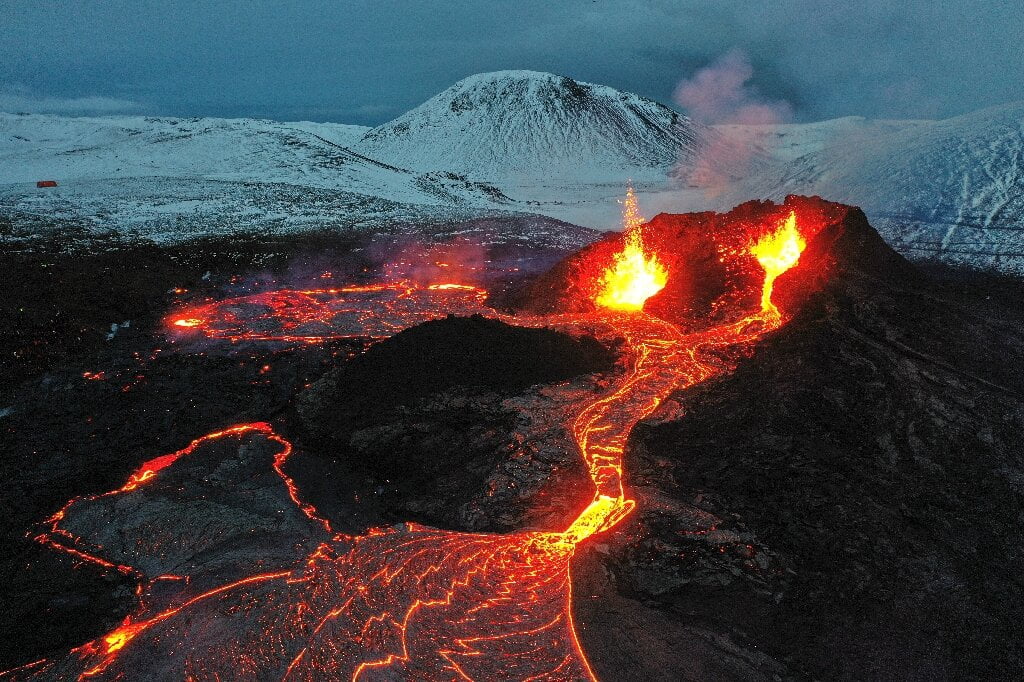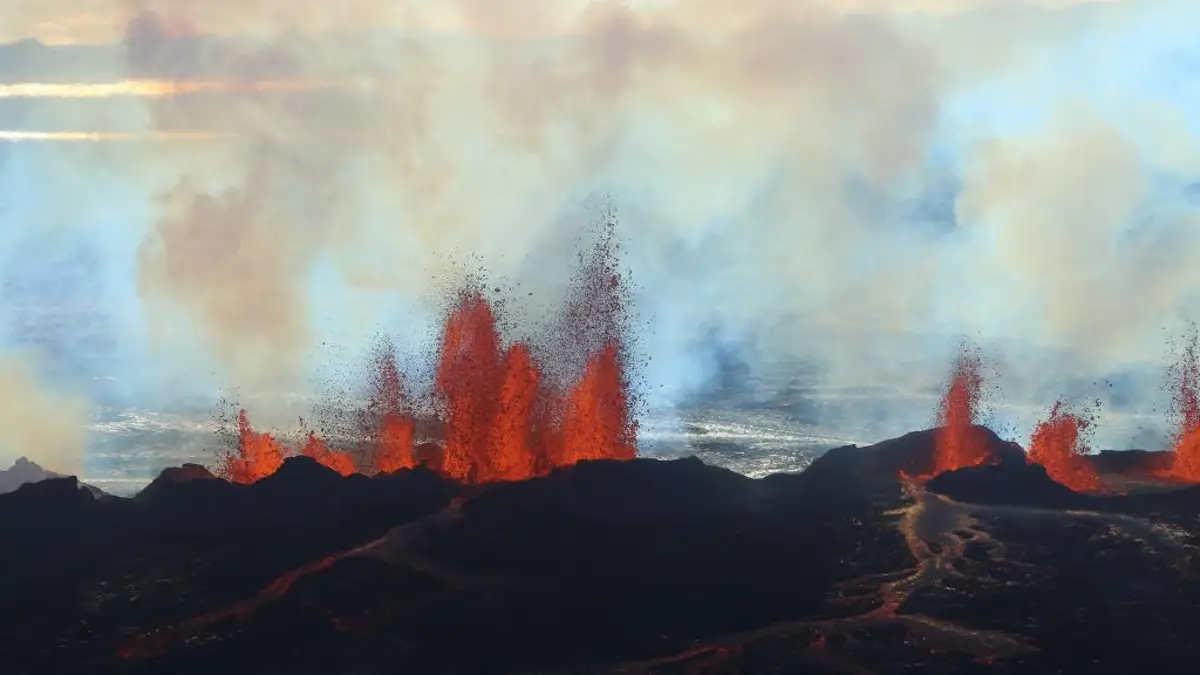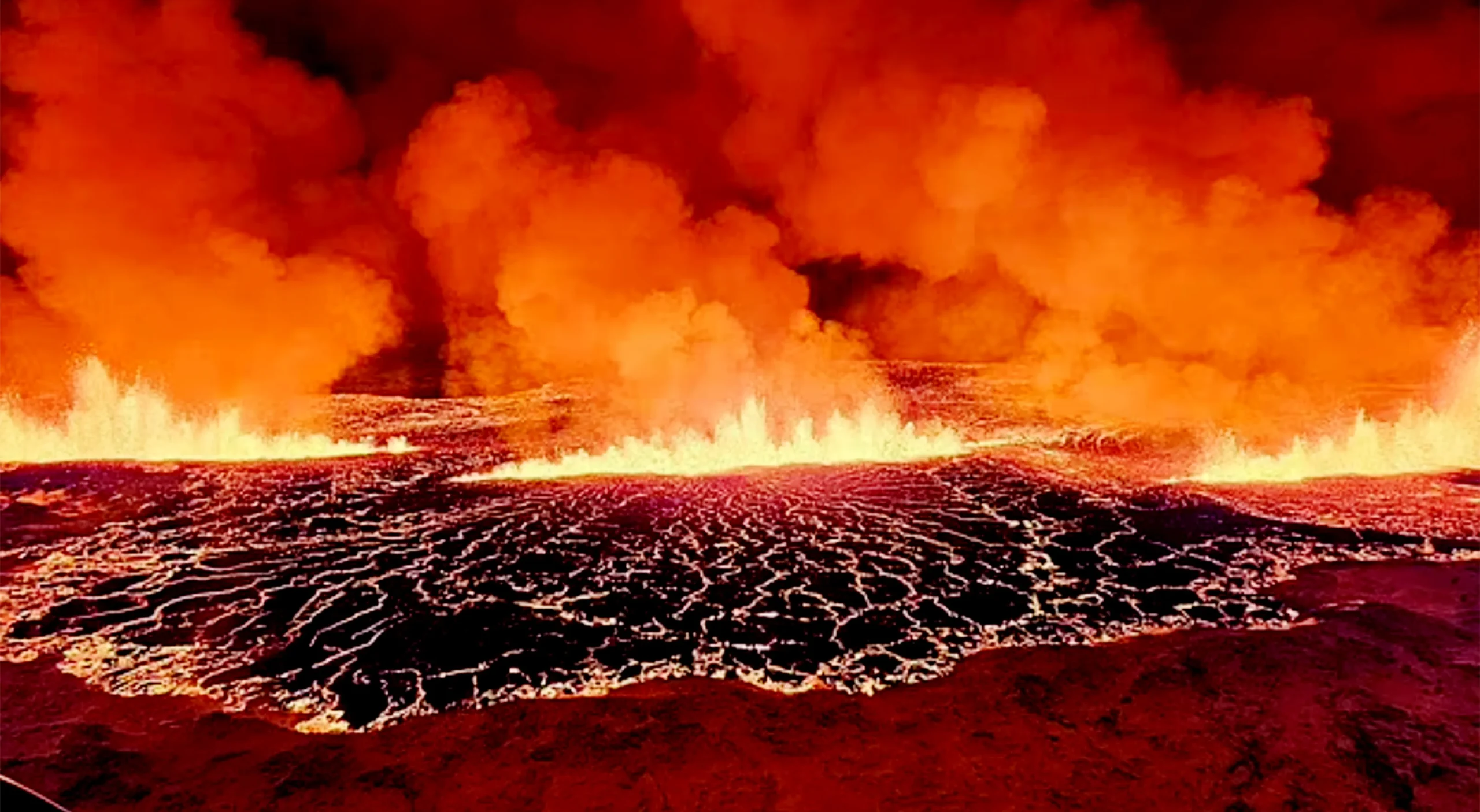Iceland Volcano Erupts in Plumes of Fire
Iceland Volcano Erupts in Plumes of Fire
Introduction
The serene landscape of southwestern Iceland was disrupted on a Monday as a volcano, nestled in the country’s most populated region, began a spectacular eruption. Lava fountains illuminated the night sky, visible for miles around in the heart of the capital, Reykjavik.

Location and Scale of the Eruption
Fissure and Proximity
The eruption emerged from a fissure approximately 2.5 miles long, expanding rapidly. Situated not far from the Svartsengi Power Plant and the recently evacuated town of Grindavík, concerns about seismic activities in the area had foreshadowed this event.

Initial Assessment
Volcanologists initially deemed the eruption’s location as one of the worst, posing an immediate threat to both the evacuated town and the geothermal power plant. However, subsequent aerial assessments provided a nuanced perspective, revealing a larger-than-anticipated eruption with unpredictable lava flow directions.
Current Situation
Lava Flow and Evacuation
Lava is presently flowing just 1.6 miles north of Grindavík, prompting a cautious response from authorities. Despite the evacuation, the eruption currently poses no immediate risk to people, according to Ulfar Ludviksson, a police official.
Warnings and Precautions
Authorities, however, caution against approaching the area casually. Hjordis Gudmundsdottir from the Department of Civil Protection emphasized that this is not a tourist-friendly volcano, urging people to stay away as the fissure continues to expand rapidly.

Anticipation and Lack of Warning
Unforeseen Eruption
While an eruption had been anticipated for weeks due to a series of earthquakes, Monday’s event occurred without immediate advance warning. The Blue Lagoon, a popular tourist destination nearby, had reopened just a day earlier, underscoring the unpredictable nature of volcanic activities.
Seismic Activity History
Thousands of earthquakes had been recorded in Iceland since late October, leading to a state of emergency and evacuation of Grindavik in November. This recent eruption marks the fourth on the Reykjanes Peninsula in the past two years.
Iceland’s Preparedness
Effective Preparedness Measures
Iceland, despite being prone to volcanic activities, boasts one of the world’s most effective volcanic preparedness measures, as stated by authorities. The country’s readiness was highlighted when Grindavik was evacuated, affirming its proactive approach to such events.
Aviation Alert
With the eruption’s potential to spew ash into the sky, the authorities raised the aviation alert to orange, recognizing the risk to aircraft. However, as of Monday night, Keflavik, Iceland’s main airport, remained open.

Historical Context: Eyjafjallajokull and Beyond
Eyjafjallajokull Eruption (2010)
Recalling the Eyjafjallajokull eruption in 2010, though relatively small and without fatalities, its impact was widespread due to an ash cloud that grounded European air travel for over a week. This eruption was a stark reminder of the far-reaching consequences of volcanic activities.
Abundance of Volcanoes
Iceland’s geological makeup, straddling two tectonic plates, contributes to its volcanic nature. With around 130 volcanoes and a history marked by eruptions, the occurrence of such events remains entirely random, as detailed on Iceland’s tourist website.
Ongoing Seismic Activity and Future Concerns
Current Seismic Activity
The ongoing seismic activity, while not affecting Katla, one of Iceland’s well-known volcanoes, raises concerns. Katla, having erupted five times since 1721, with the last major eruption in 1918, is under close observation by scientists anticipating its next awakening.
Conclusion
As southwestern Iceland experiences this latest volcanic awakening, the country’s resilience and preparedness stand out. While the eruption is a testament to the unpredictable nature of geological forces, Iceland’s effective response mitigates potential risks to its residents.
Frequently Asked Questions:
- Is the current volcanic eruption a significant threat to the evacuated town of Grindavík?
- While the eruption is substantial, with lava flowing near Grindavík, the town’s evacuation ensures no immediate threat to residents.
- Why were there no immediate advance warnings despite the anticipation of an eruption for weeks?
- Volcanic activities can be unpredictable, and Monday’s eruption occurred suddenly, catching authorities off guard despite weeks of seismic activity.
- What is the significance of raising the aviation alert to orange, and how does it affect air travel?
- The orange aviation alert signifies potential ash spewing into the sky, posing a risk to aircraft. However, as of now, Keflavik, Iceland’s main airport, remains open.
- How does Iceland’s volcanic preparedness compare to other countries?
- Iceland is known for its effective volcanic preparedness measures, as demonstrated by the timely evacuation of Grindavík and proactive alerts.
- What historical events underscore the impact of volcanic activities in Iceland?
- The Eyjafjallajokull eruption in 2010 serves as a notable example, causing widespread disruption to European air travel despite its relatively small size.
